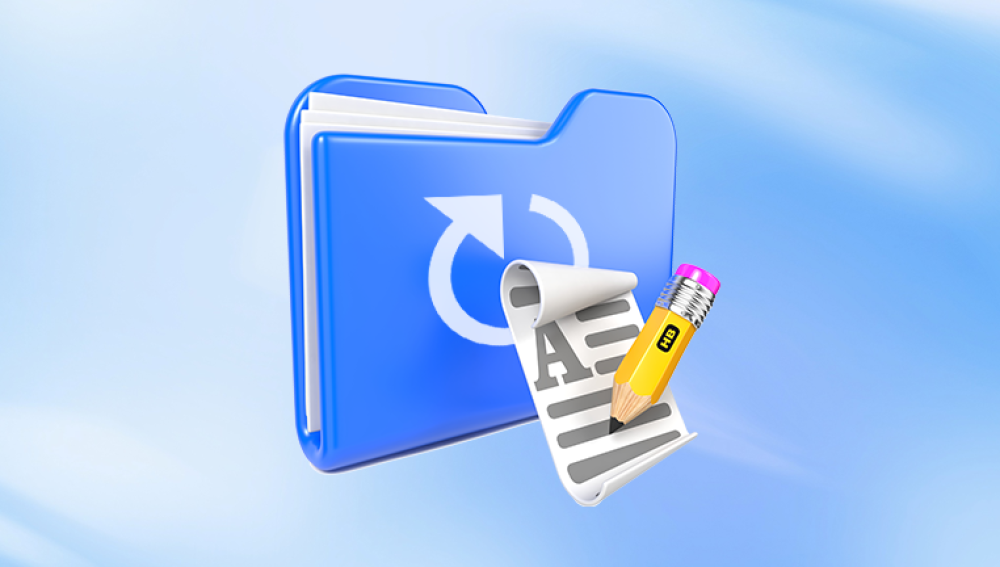Yet, with just one accidental deletion, an unexpected crash, a corrupted drive, or a misstep in formatting, those critical files can vanish without warning. Fortunately, not all hope is lost. Free file recovery software has become increasingly powerful, offering everyday users and professionals alike a fighting chance to restore deleted or lost files without spending a cent.
When you delete a file on your computer or storage device, it doesn’t immediately disappear. Instead, the operating system marks the space it occupies as “free” and removes the file's reference from the directory structure. The actual file data remains on the disk until it is overwritten by new information.

This window of opportunity is what makes data recovery possible. Free file recovery software taps into this unclaimed space to search for traces of deleted files and rebuild them.
However, time is critical. The longer you wait and the more data you write to that storage device—the smaller the chance of full recovery. That’s why it’s essential to stop using the drive and launch recovery efforts as soon as possible.
What Makes a Great Free File Recovery Software?
Not all recovery tools are built equally. Some are barebones, offering only the most basic recovery options, while others come packed with features that rival paid software. When choosing the right one for your needs, look for the following characteristics:
1. Deep Scan Capability
A deep scan is essential for locating older or fragmented files that quick scans might miss. The best tools allow you to toggle between a fast initial scan and a more thorough deep scan.
2. Wide File Type Support
From photos and videos to documents, archives, and system files, the more file types the software supports, the better your chances of retrieving what you lost.
3. File System Compatibility
The software should work with common file systems such as NTFS, FAT32. exFAT, HFS+, and ext3/ext4 for Linux volumes.
4. Preview Functionality
Previewing files before recovery allows you to confirm which files are still intact and worth restoring.
5. Platform Support
Choose software that runs on your operating system—whether Windows, macOS, or Linux. Bonus points if it supports external drives, USBs, memory cards, and even camera SD cards.
6. No Data Overwrite
A reliable tool scans in read-only mode to avoid writing new data to the drive during recovery.
7. Recovery Limits
Many free tools offer a capped amount of recoverable data. Check the limits before you begin, especially if you're recovering large files.
Best Free File Recovery Software Options
Now that you understand the basics, let’s dive into the top free file recovery programs available today. These tools are free to download and use, though some may offer optional paid upgrades.
1. Drecov Data Recovery
Drecov Data Recovery is a leading free file recovery solution designed to help users retrieve lost, deleted, or formatted files from a variety of storage devices. Whether you’ve accidentally deleted important documents, lost photos from a USB drive, or formatted your external hard drive by mistake, Drecov Data Recovery provides a fast, user-friendly way to recover your data without cost.
One of the standout features of Drecov Data Recovery is its powerful scanning engine, which includes both quick and deep scan modes. The quick scan is ideal for recently deleted files, while the deep scan thoroughly searches your drive for long-lost or fragmented data. It supports all major file types images, videos, audio, documents, and more making it suitable for personal, academic, and professional use.
The software works with a wide range of file systems, including FAT32. exFAT, and NTFS, and is compatible with hard drives, SSDs, USB sticks, SD cards, and other external storage devices. Its clean, intuitive interface allows users of all experience levels to perform recovery tasks in just a few clicks.
2. PhotoRec
Platform: Windows, macOS, Linux
Best For: Advanced users and recovering media files
Don’t let the name fool you—PhotoRec can recover far more than just photos. This powerful open-source recovery tool supports over 480 file extensions and works across multiple platforms. It’s especially strong with SD cards, USB drives, and camera memory cards.
PhotoRec works by ignoring the file system altogether and searching for known file signatures. This makes it perfect for recovering data from severely corrupted or formatted disks. However, its command-line interface may be intimidating for beginners.
Pros:
Open-source and completely free
Extremely powerful recovery engine
Works with a wide range of file types and devices
Cons:
No graphical user interface (for PhotoRec; TestDisk companion tool has minimal GUI)
Lacks file sorting and filtering features
3. Drecov Data Recovery
Platform: Windows, macOS
Best For: Balanced performance and ease of use
Drecov Data Recovery strikes an ideal balance between functionality and simplicity. It supports file recovery from various scenarios—accidental deletion, formatted drives, virus attacks, or system crashes.
The free version offers powerful scanning, file preview, and selective recovery. It supports a wide array of file types and works on both internal and external drives. While not as feature-rich as premium recovery tools, its effectiveness in common data loss situations makes it an excellent choice.
Pros:
Easy-to-use interface
Safe, read-only recovery
Free version includes deep scan and preview
Cons:
Some advanced features locked behind a paid upgrade
May not support Linux file systems
4. EaseUS Data Recovery Wizard (Free Version)
Platform: Windows, macOS
Best For: Recovering small volumes of critical data
EaseUS is a big name in the data recovery industry. Its free version allows users to recover up to 2GB of data and supports documents, photos, videos, emails, and more.
The user interface is polished, and the software supports recovery from deleted partitions, crashed systems, and RAW drives. It’s ideal if you need to retrieve just a few important files and want a stress-free experience.
Pros:
Intuitive UI, great for beginners
Supports recovery from lost or deleted partitions
Recovers data from SD cards, USBs, HDDs, and SSDs
Cons:
Limited to 2GB in free version
Some advanced features are paid-only
5. Disk Drill (Free Version)
Platform: Windows, macOS
Best For: All-in-one data recovery with a modern UI
Disk Drill offers one of the most attractive and easy-to-use interfaces in the recovery space. It supports hundreds of file formats and offers both quick and deep scans. You can recover files from virtually any storage device: internal hard drives, USBs, SD cards, digital cameras, and more.
The free version on Windows allows up to 500MB of recovery. macOS users get file preview features for free but must upgrade to recover data.
Pros:
Sleek user interface
Recovery Vault protects future files
Supports partition recovery and disk imaging
Cons:
500MB limit on Windows (no free recovery on Mac)
Paid version required for serious recovery needs
6. Windows File Recovery (Microsoft)
Platform: Windows 10 and later
Best For: Tech-savvy Windows users comfortable with command line
Microsoft’s own file recovery tool is a command-line utility available in the Microsoft Store. It can recover files from internal and external drives, USBs, and memory cards. While not user-friendly for novices, it’s powerful under the hood and completely free.
You can choose recovery modes like Default, Segment, and Signature depending on how severe the data loss is. It’s best suited for users who prefer functionality over design.
Pros:
Built and maintained by Microsoft
Effective for NTFS drives
Free with no recovery limits
Cons:
Requires use of Command Prompt
Only compatible with Windows 10 and above
7. Wise Data Recovery
Platform: Windows
Best For: Fast scans and recovery of recently deleted files
Wise Data Recovery is a small but effective tool for quick recoveries. It’s ideal for when you realize you deleted a file recently and want it back without navigating complex options.
Its scans are lightning fast, and it shows recovery likelihood with color-coded results (Good, Poor, Lost). Though it lacks deep scanning and advanced features, it’s excellent for speedy retrievals.
Pros:
Fast, lightweight
Portable version available (no install needed)
Clear status indicators
Cons:
Not ideal for complex recovery tasks
No macOS version
Tips for Successful File Recovery
Even the best software can’t work miracles if files are already overwritten. Follow these best practices to increase your recovery success rate:
1. Stop Using the Drive Immediately
Minimize further use of the drive containing the lost files. Avoid saving new data to it.
2. Recover to a Different Drive
When restoring files, always save them to a different storage device than the one you’re recovering from.
3. Act Fast
The longer you wait, the higher the chance that the deleted data will be overwritten.
4. Don’t Reinstall on the Target Drive
Never install recovery software on the drive you need to recover files from. This could overwrite the very data you want to save.
5. Use Deep Scan if Quick Scan Fails
If you don’t see your files after a quick scan, try a deep scan—it takes longer but is more thorough.
What If Free Software Isn’t Enough?
While free tools are great for most casual data recovery needs, they often come with limitations: restricted recovery sizes, fewer supported formats, or no access to customer support. If your lost files are business-critical or irreplaceable, and free tools can’t get the job done, consider upgrading to a paid version or contacting a professional recovery service.
Professional data recovery services use advanced tools and cleanroom labs to recover data from severely damaged or failed storage devices. While expensive, they are often the last resort for otherwise unrecoverable data.
Losing files can be a stressful experience, but free file recovery software gives you a solid chance at getting your data back without the need to open your wallet. Whether you’re using Recuva for its ease of use, PhotoRec for its raw power, or Drecov Data Recovery for its balanced design, the right tool can make a world of difference.
Recovery success often depends more on how quickly and carefully you respond to the data loss than on which software you use. By acting promptly, avoiding overwriting data, and choosing the best software for your situation, you maximize your chances of a successful recovery.




